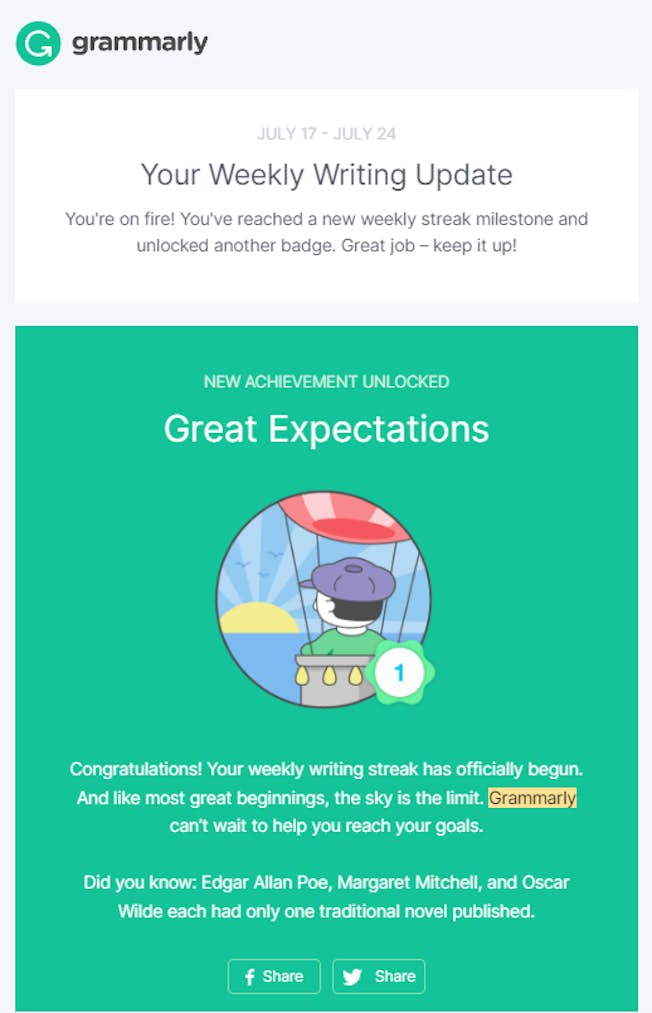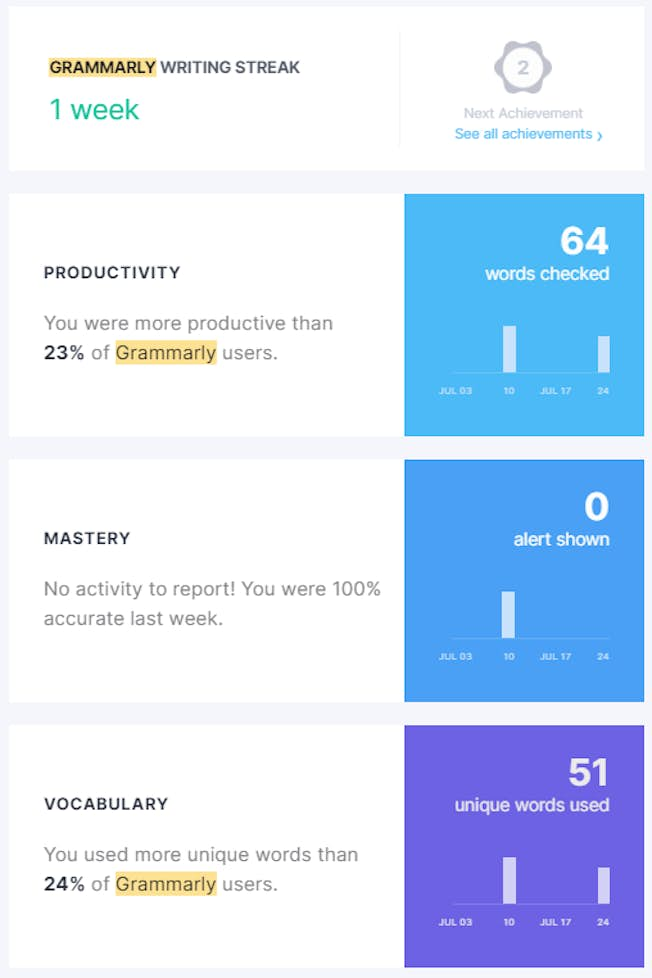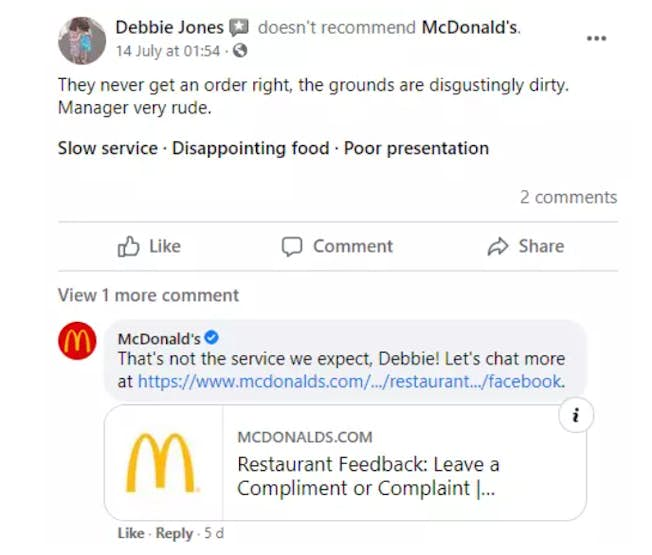Sep 28, 2023
6 Simple & Effective Ways to Nurture Your Customer Relationships
Customers are becoming more picky about where they shop. It's no longer about having the best marketing campaign, the biggest influencer, or the most well-known brand, for many, it's about transparency, value, sustainability, and most importantly, customer experience.
61 percent of consumers will pay at least 5 percent more if they know they will get a good customer experience according to an Emplifi report. This statistic should not come as a surprise to many businesses, particularly as they use digital channels to personalize and automate.
Customers use comparison shopping engines to find the best deals, and sites like eBay to negotiate on price points where possible. Yet at our core, what people want is a positive customer experience and a personal touch.
If you’re worried that you’re not nurturing your customers properly, or think there’s more you could do to drive positive sentiment toward your brand, we’ve broken down 4 simple ways to turn your relationships into revenue generators:
1. Use Analytics to Create Personas
The more you know about your potential customers, the more successful you will be at developing meaningful relationships. Gathering as much customer data as possible will allow you to build a detailed profile of your customer’s needs, preferences and key characteristics.
This is often referred to as a customer or buyer persona. Traditionally, customer personas include information on demographics, behavior patterns, motivations, challenges and goals. The number of personas you create will depend on how you segment your customer base.
Because of online channels, the balance of power between businesses and buyers has shifted significantly. Customers are more empowered and self-sufficient, more inclined to turn to search engines and social media to carry out product research.
So they are less susceptible to hard sells and one-way 'push' marketing messages that are more interruptive than influential. As more businesses understand this, they have focused on using analytics to inform a more effective approach – data-driven marketing is becoming a top strategic priority for many.
Customer analytics will provide you with a deep, granular understanding of your existing and potential customers’ buying habits and lifestyles. This will allow you to predict their future buying behaviors and cater to them accordingly with a more targeted, structured sales and marketing approach.
Some important sources of customer data are:
- Website analytics - Where are your customers interacting on your site? What pages drive traffic? Where are conversions happening?
- Social media - What social media channels are customers reaching out or engaging on? Are customers using social commerce and if so why and where?
- Emails - What emails are people interacting with? If you have workflows where are people falling off or clicking through?
- Customer feedback - What are customers saying about your product or service? What queries or complaints are being made?
- Transactions - What are people purchasing? What are people abandoning? Are they buying more than one product? How often are they returning?
- Interactions - If you have a quiz or interactive element on your site, what are the results? What are people doing after answering the questions?
- Intent - What are people searching for online that relates to your products or services? What are the search queries? What keywords are being used?
The insights derived from customer analytics will facilitate reduced campaign costs, as you can optimize your targeting and deliver marketing messages more effectively to the customers most likely to respond in a positive manner. You’ll also be able to maximize customer loyalty and positive sentiment, by delivering the right message to the right customers at the right time. All of this should culminate in increased sales and ROI.
2. Send Personalized & Relevant Emails
Email marketing is one of the most powerful channels you can use to communicate with and engage customers. It’s a direct and personal channel (using first-party data) that allows you to foster a sense of loyalty and nurture relationships more quickly and easily than other digital channels.
If a customer has consented to give you their email address, they have already been exposed to your brand, are willing to receive correspondence from you, and may have even purchased from you. This is significant – in order to sustain your business’s profitability, you need to encourage repeat purchases. Not only is it less expensive to sell to an existing customer than it is to acquire a new one, repeat customers spend more than new customers.
And this is where personalization becomes important. By sending your customers tailored and relevant emails, you’ll be able to demonstrate your brand’s investment in their unique needs and interests.
For example, if they’ve abandoned their shopping cart, you can send a friendly reminder and ask them if they need any help completing their transaction. If they’ve spent time on product pages, you can follow up with more information and benefits. Or maybe it’s been a year since they first subscribed to your newsletter, and you want to send them a note celebrating this anniversary.
Here's a great example from the cloud-based typing assistant, Grammarly. Based on activity using the platform, personalized emails are sent showing progress on a regular basis with the incentive of a badge.

The email goes on to show graphs that compare usage to peers in different areas to drive curiosity and engagement. The email then ends with a CTA to 'Go Premium', the perfect example of using personal data to nurture and convert.

With the power of trigger emails and marketing automation (particularly using AI), you can take a proactive approach to solidifying your customer relationships, without having to spend a huge amount of time or effort. You can tailor communications suited to every stage of the customer journey, and, due to your instant visibility in their inboxes, the chances of receiving a response are enhanced.
The goal is to use your personalized marketing emails to provide valuable, informative, authentic content to show you understand your customers and care.
3. Use Social Media to Respond & Serve
Social media is an effective channel for communicating and connecting. Many businesses make the mistake of thinking that they can use their social channels solely for building brand visibility and extending reach. However once they establish an online presence, businesses have a responsibility to use their social channels to provide customer service, as and when it is required.
According to Sprout Social, 79 percent of customers expect a response to their social media posts within 24 hours. But, even though 63 percent of social media complaints are responded to within that time, only a third of people are happy with their response time.
This means you need to adopt a proactive and reactive approach to managing your social media and nurturing your online communities. You can do this by responding to any query, complaint or brand mention quickly, providing the best possible solution using a personal, ‘human’ touch.
Never forget that your social channels are an extension of your brand, just as important as your website or a hard copy brochure, and any negative experiences a customer may have via social media have the potential to harm your brand’s online reputation.
The best thing to do is implement a system that enables you to prioritize customer communications depending on how urgently they require a response – i.e. a tweet with a complaint should be addressed over a positive comment or compliment.
Here's an example from McDonald's responding to a customer complaint.

Be sure to carry out regular searches for brand mentions and social media posts that may not have tagged you directly. For example, only a small percentage of tweets mentioning a company are directed at the company, yet they may require engagement.
The more you can do to promote a positive social customer experience, the more likely your customers will be to recommend your business to others.
4. Aim to Retain Customers
According to SEMRush, 44 percent of businesses focus on customer acquisition, while only 18 percent focus on customer retention. If you aim to retain, you will make more of an effort to nurture your customer relationships.
We’ve already established that retention is cheaper than acquisition, but it can expand your profit margins too. That's because it can cost four to five times more to acquire new customers versus retaining current ones reported a Forbes article.
Besides an exceptional product offering and competitive price point, there are a number of approaches you can take to improve retention rates.
- Measure Lifetime Value (LTV) - This value will tell you what to expect in total revenue from a single customer account throughout the relationship. It will help you to understand what kind of products your customers want, what products or services are the most profitable, and what relationships drive sales.
- Use multiple touchpoints - When customers are online they can move from one channel to another easily. So it's important to optimize a person's journey across channels from online chat to social media to your website.
- Create relevant content - Regardless of your business type or target audience, content marketing is a top-performing retention tool and can help you to deliver personalized messaging across formats from a blog to a social media ad.
- Personalize emails - You should know why a person is on your email list. Did they download a brochure or sign up for a newsletter? Once you know their journey you can create a tailored workflow that will drive them to remain loyal and repurchase.
- Use analytics - Analytics tell the story of your customers online. Where are they engaging, what are they doing when they engage with your product and what are the most engaged customers looking at? Use all this information to create a retention strategy.
- Use automation - Automation tools can help you send emails based on preference. use chatbots to respond to customer queries and even write copy using ChatGPT.
- Adopt Social Customer Service - As we said above, you should be using social media to respond to queries and deal with complaints. You can also be proactive and ask for feedback or testimonials that can be used to drive retention.
Finally, the best way to nurture positive customer relationships and loyalty is to reward them for it which we move on to next!
5. Encourage Brand Loyalty & Incentivize Referrals
Never underestimate a loyal customer. Encouraging loyalty is the best way to show the value of your products or services to potential and existing customers.
That's why you should reward and nurture existing customers. It will help to show them you value their business but also incentivize them to purchase again, share opinions about your business, or refer others.
There are a few simple and effective ways to encourage brand loyalty:
- Offer special or VIP discounts
- Give early access to sales or promotions
- Start a loyalty or rewards program (e.g. points = money off)
- Offer discounts in return for customer referrals
- Offer a free gift
- Mark anniversaries (e.g. birthdays)
Here's an example from restaurant chain, Zoe's Kitchen for being part of its rewards program.

6. Embrace an Omnichannel Approach
By now you should have heard of omnichannel marketing. Put simply, it's an approach to marketing that allows businesses to deliver a consistent and seamless customer experience across all channels - online and offline.
Key digital marketing channels for omnichannel are:
- Email marketing
- Social media
- Remarketing
- Website optimization
- Video
- Search marketing
- Display advertising
- Affiliate marketing
Using this approach will allow customers to contact you in various ways and boost customer satisfaction (as long as someone is keeping an eye on those channels!) The key is to ensure this approach is integrated and when a customer moves from one touchpoint to the next the experience is seamless and relevant.
For example, if you're leading someone from a social media post to a landing page, make sure the content is relevant and is recognizable as from the same brand or campaign. Ultimately, it's about delivering the same message at all points of the journey.
Updated 2023
- Categories:
- Articles
- Customer Experience (CX)
Upgrade to Power Membership to continue
your access to thousands of articles, toolkits, podcasts, lessons and much much more.
Become a Power Member- Login
- View Courses
- - - -
- Courses
- Resources
- - - -
- My Account
- Change Password
- Logout




